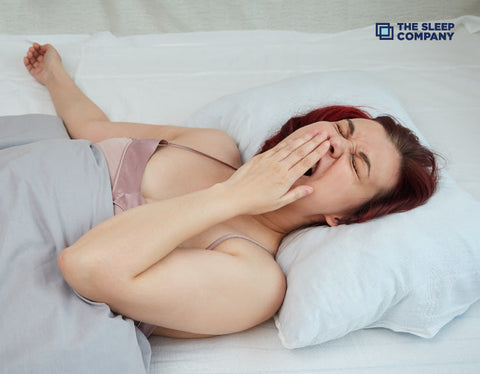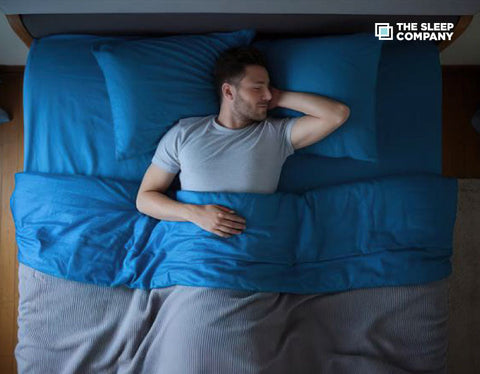My Cart

How to Refresh Yourself with a Quick Power Nap?

There is something about naps that everyone loves. Who doesn’t love to shut their eyes for a few minutes and wake up refreshed like a daisy? A quick afternoon nap is like hitting the reset button in your brain, according to scientists. Have you ever feel like this? It’s 3 p.m. on a weekday, and your eyes feel like they’re dangling from their sockets. You’ve attempted a mid-afternoon snack for a sugar boost and ended up in an even worse slump. If yes, then you should try power nap to restore your energy. Our contemporary lifestyles can be hectic and can require a little break in the middle of the day to increase our energy levels.
What is Power Nap?

A power nap is a brief period of rest that occurs during the day. Even fifteen-minute naps may recharge your batteries and boost your energy levels. Power naps reduce brain and body activity just enough to re-energize you. Sleeping for lengthier periods of time slows down your pulse and brain wave activity even more, making you feel lethargic when you wake up.
A little nap has been proved to be the most effective approach to combat afternoon fatigue. Power napping can strengthen your immune system, improve your memory and clarity of thought, increase your attentiveness and creativity, and help you relax. If you do it correctly, you’ll start your day with a fresh, alert mind rather than a lethargic post-sleep fog.
Here are several reasons why we should all close our eyes during the day
- Easy way to get some relaxation and to reduce mental fatigue.
- Restore alertness
- Restore wakefulness and promote learning
- Reverse the hormonal impact of a night of poor sleep.
- Enhance both physical & cognitive performances
- Reduce stress and immune perturbations after a short night.
How to take Power Nap?
The purpose of a power nap is to make the most of a short period of rest during a hectic day. Longer naps might not only make you feel drowsy, but they can also influence the quality of your nocturnal sleep. In fact, power naps aren’t recommended for people who have trouble sleeping at night. Only take a quick snooze if you’re fatigued during the day. Here are a few basic principles to follow in order to get the most out of your power nap:
Perfect Nap Time: According to Harvard Medical School research, we should take a lunchtime sleep to avoid the midday slump. Our circadian cycle is at its lowest during this time, which is why this afternoon nap is so lovely. The Sleep Council’s research also claims that there is a best time of day to nap in order to get the most advantages and it is 3 p.m.
Our circadian cycle is at its lowest during this time, which is why this afternoon nap is so lovely. In addition, 3 p.m. corresponds to that tired post-lunch sensation, when awareness may be at an all-time low. Naps should be 20 to 30 minutes long, as prolonged periods of sleep may make you feel drowsy and may impair your sleep later in the day.
Nap Environment : If you’re napping at home, the most comfortable spot to sleep is in your bed. You don’t want to feel too comfy, either, as this may prevent you from waking up. Sleeping on the comfortable mattress is the best option to get cozy nap during the day. If you’re looking to buy mattress online, then make sure to choose the right one that provide enough comfort and support to your body. One can also try orthopedic mattress for back pain to avoid body pain issues during nap time.
Finding a comfortable place to snooze at work might be difficult. Many companies, fortunately, provide napping areas for their staff during their breaks. You can also doze off for few minutes on your office chair. If you don’t have this luxury at work, consider napping in your car. Bringing an additional seat cushion or blanket each day will make dozing in your vehicle more pleasant.
Once you’ve created the ideal sleeping environment for yourself, keep your distractions to a minimum so your mind doesn’t wander.

After Napping: When naps last longer than 30 minutes or lead you to transition into or deep sleep, they’re more difficult to get up from and frequently result in severe lethargy, which is referred to as sleep inertia. A transitory time between sleep and waking is known as sleep inertia. If you wake up with sleep inertia, you’ll feel tired and sluggish for several hours following your nap. Don’t over-sleep when your alarm goes off – even if you feel a little drowsy for the first two minutes. This will pass and you’ll enjoy a new burst of energy.
Practical tips to Nap Wisely

- Napping means lying down, eyes closed, deep breathing.
- Time your naps about 12 h from the middle of your usual sleep period. If you usually sleep from 11 P.M. to 7 A.M. that means napping around 3 P.M
- Aim for naps of between 15 and a maximum of 30 min.
- If you can’t sleep and your brain won’t settle down, consider meditation instead.
- Find the perfect napping environment. For effective napping, try a comfortable mattress for nap. Buy mattress online and add extra comfort to your nap time.
- When you wake up from a short nap like this, you should feel refreshed and alert within 15 to 30 min.
- You can consider having a coffee before your nap to help the subsequent wake-up process.
- If your post-nap grogginess persists longer than that, it suggests there’s something else going on like a chronic sleep deficit.


































































